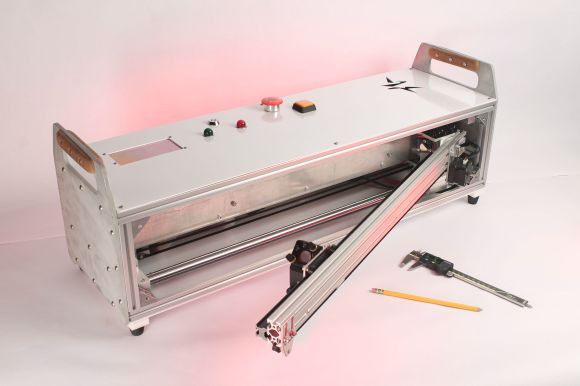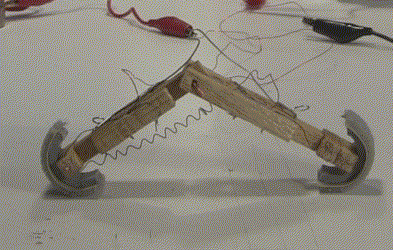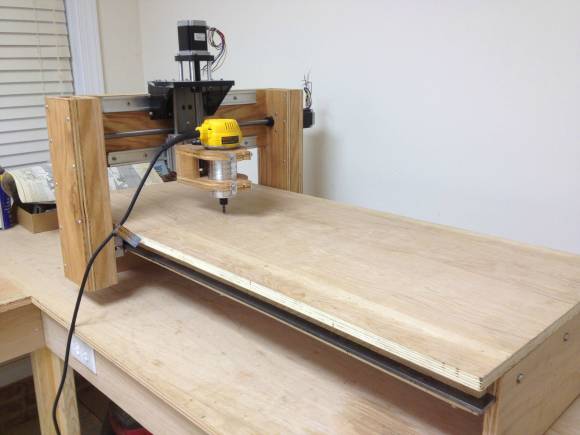
Often times it’s tricky to make space for a full size laser cutter… so a group of friends over at Pittsburgh TechShop have been working on designing a fold-out version for easy storage. It’s still a prototype/proof of concept, so we’ll overlook the obvious safety concerns for now.
It’s built predominately out of aluminum extrusion and a few custom machined parts. A 40W CO2 laser tube sits in the back with optics reflecting it out to the laser head. The X-axis pivots on a heavy duty hinge mechanism and then locks in place for use. Unfortunately there are no videos of it in action, but the whole arm-linkage is apparently quite rigid and robust.
Like we said, this is one of their first prototypes or proofs of concept — as they continue to enhance the design they are considering taking it to Kickstarter down the road. They plan on enclosing the beam path in order to make it safe, and we’ll certainly be interested to see how that works out!
For more info on the project, there’s a thread on Reddit going strong.
[Thanks Ollie!]

















